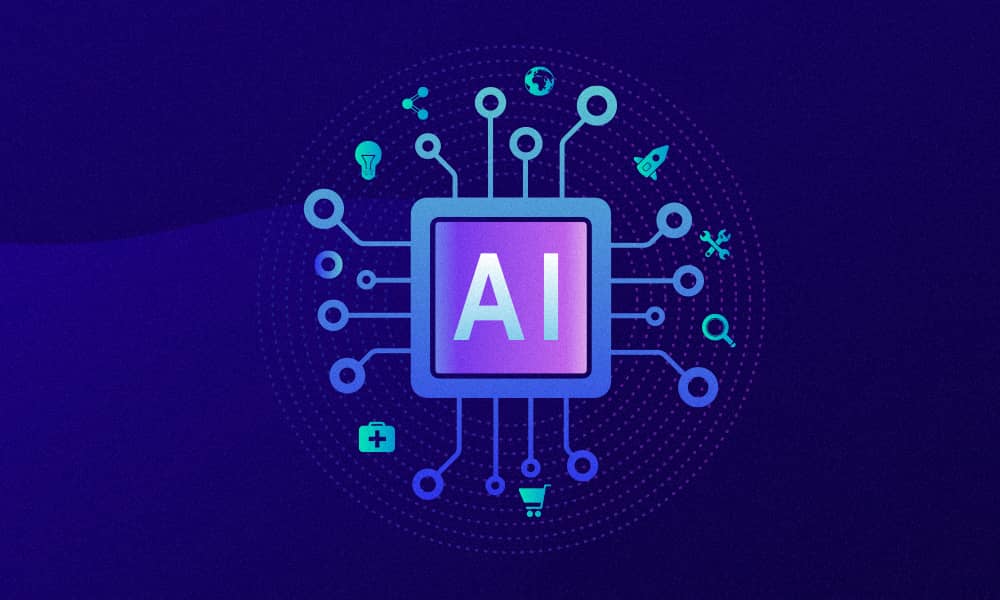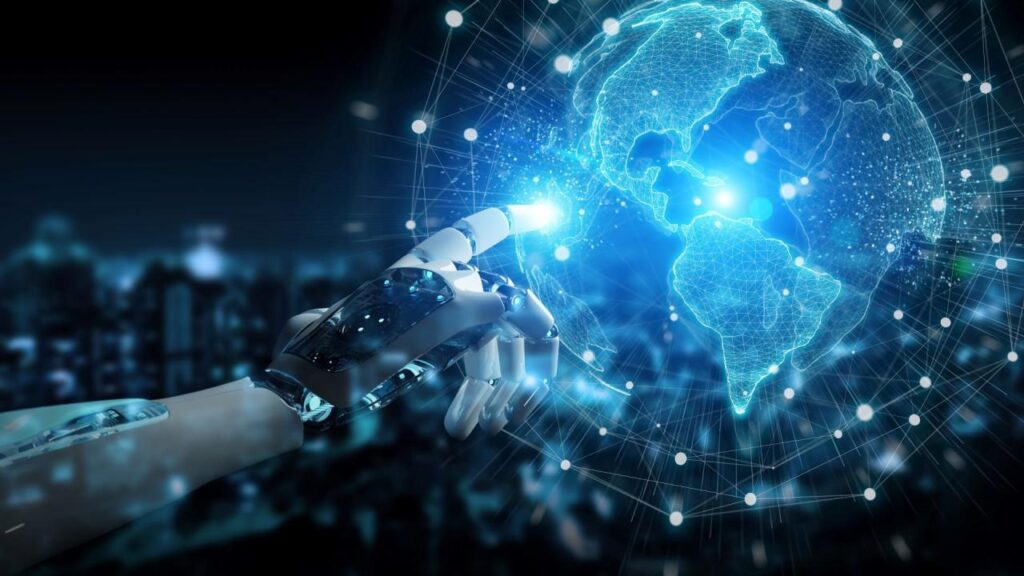Anticipating Needs: The Unseen Customer Journey
The world of consumer interaction is undergoing a silent but profound revolution, shifting the focus from responsive customer service to proactive, personalized, and virtually invisible customer experience (CX). This evolution is driven primarily by the maturation of artificial intelligence, particularly its ability to process vast streams of real-time data to predict a customer’s needs, preferences, and potential pain points before they are even consciously recognized.
We are quickly moving past the point where a good experience meant quick access to a human agent; the new benchmark for excellence is the total elimination of the need to ever contact support in the first place, signifying a perfect, friction-free engagement.
This seamless integration of technology into the background requires companies to develop sophisticated digital infrastructures that can blend internal data, external market signals, and individual behavioral metrics into a single, comprehensive customer profile.
Furthermore, the commitment to making service “invisible” demands an organizational culture where every department, from product development to logistics, views its role through the lens of preventative problem-solving, rather than post-incident remediation.
This deep, systemic transformation is fundamentally reshaping brand loyalty, as the most valued brands are becoming those whose services simply work, effortlessly, and without ever demanding the customer’s attention or intervention.
From Reactive Support to Predictive Intelligence

The hallmark of the traditional customer experience model was its reactive nature: a customer had to encounter an issue, express frustration, and then seek a solution. The invisible CX model completely inverts this paradigm, using advanced machine learning to anticipate and resolve issues before they escalate, often before the customer is even aware of the potential problem.
Pillars of the Predictive CX Model
This transformation relies on several key technological and strategic shifts that elevate simple automation to true predictive intelligence.
A. Proactive Issue Resolution (PIR): Systems monitor product usage data, diagnostic logs, and supply chain updates to detect failures or delays and automatically trigger remedial action, such as dispatching a technician or initiating a refund, without customer contact.
B. Sentiment and Intent Mining: Advanced Natural Language Processing (NLP) tools continuously analyze customer interactions (social media, forum posts, abandoned shopping carts) not just for stated problems, but for underlying frustration or confusion that indicates a future support need.
C. Behavioral Triggering: AI models establish a baseline of normal customer behavior; any deviation—a sudden drop-off in usage, repeated clicks on a help icon, or unusual page navigation—triggers an automated, subtle intervention, such as a personalized, non-intrusive in-app tip.
D. Hyper-Personalized Content Delivery: Instead of generic “Help” pages, the system serves up documentation, tutorials, or FAQs that are custom-filtered based on the customer’s precise account status, device type, and recent activity, making the solution immediately relevant.
E. Zero-Touch Transactions: Utilizing biometric identity verification and tokenization, services like checkouts, payments, and account updates are completed with zero required input or action from the customer, reducing cognitive load and potential error.
The Technology Making Service Disappear
The true engine behind the invisible customer experience is the convergence of several cutting-edge technologies working in concert, forming a seamless digital tapestry that envelops the customer. Without these integrated systems, “invisible CX” remains merely an aspirational concept.
Critical Invisible CX Technologies
A. The Unified Customer Data Platform (CDP): This serves as the single source of truth, pulling data from all channels (web, app, physical store, service desk, IoT devices) to create one real-time, 360-degree view of the customer, fueling predictive models.
B. Context-Aware AI Agents: Unlike simple chatbots, these AI agents retain a long-term memory of past interactions and understand the real-time context (location, purchase history, outstanding issues), enabling them to manage complex, multi-day interactions autonomously.
C. Internet of Things (IoT) Diagnostics: Embedded sensors in products (e.g., home appliances, vehicles, industrial equipment) continuously stream diagnostic data, allowing the manufacturer to predict component failure and order a replacement part before the product actually breaks.
D. Microservices Architecture: Companies build their entire digital infrastructure using small, independent microservices that can be updated, scaled, and connected instantly, ensuring that personalized experiences can be deployed and retired dynamically.
E. Intelligent Workflow Automation (Hyperautomation): Utilizing Robotic Process Automation (RPA) combined with AI, routine background tasks—like data entry, invoice processing, or simple ticket classification—are completely automated, freeing human agents to handle only truly unique or sensitive cases.
Redefining Customer Loyalty and Trust

In the era of invisible CX, the foundation of brand loyalty shifts dramatically away from flashy marketing campaigns toward a fundamental reliance on reliability, privacy, and the elimination of effort. Customers no longer just use a brand; they rely on its systems to flawlessly manage aspects of their lives.
New Drivers of Brand Advocacy
A. The Trust Premium: Because the invisible model requires companies to possess and process more personal data for prediction, transparency and strict data governance become the ultimate competitive advantage, leading to a “trust premium.”
B. Effortlessness as Loyalty: Customer friction is the primary driver of churn; the brand that consistently removes the most effort from the customer’s life—the one that requires the least thinking—wins enduring loyalty.
C. Emotional Connection through Reliability: The sense of relief and satisfaction when an issue is solved without any action on your part creates a deep, subconscious positive reinforcement, strengthening the emotional bond with the brand.
D. Personalization without Creepiness: The successful invisible experience must deliver hyper-relevance without making the customer feel watched or exposed; the distinction lies in predicting needs versus overtly stating what you know about them.
E. Shifting the Competitive Edge: Competition moves away from price wars and product features toward who has the most reliable, secure, and predictive background systems, making the quality of the underlying AI architecture the new battleground.
Operational Shifts for Invisible Service Delivery
Achieving truly invisible service is not just a technological challenge; it demands a significant and painful restructuring of the organization, breaking down traditional silos between departments that have historically operated in isolation.
Required Internal Transformations
A. Merging Product and Service Teams: The product team must actively own the post-purchase experience, viewing every bug or design flaw as a failure of the service model, thus integrating service insights directly into the design process.
B. Data Literacy for All Employees: Every employee, from the warehouse floor to the executive suite, must be trained to understand how their daily actions impact the accuracy and quality of the central Customer Data Platform (CDP).
C. KPIs Focused on Prevention: Success metrics shift from reactive measures (e.g., average handling time, first call resolution) to predictive measures (e.g., number of issues averted, predictive accuracy score, reduction in inbound calls).
D. The Empowered Human Agent: Human agents are retained not for simple transactions, but as highly skilled “Exception Managers,” trained in complex problem-solving, empathy, and providing high-touch service for the 1% of cases the AI cannot solve.
E. Investment in Simulation and Testing: Companies must invest in sophisticated digital twin technology to simulate customer journeys and stress-test the invisible experience under various high-load, unexpected, and abnormal scenarios before deployment.
Ethical Boundaries and the Privacy Imperative
The promise of a perfectly anticipatory customer experience comes with a profound responsibility regarding customer data and privacy. For the CX to truly remain “invisible” and trusted, the ethical framework supporting it must be highly visible and transparent.
Governing the Unseen Service
A. Privacy by Design Mandate: All new service technologies must be designed from the ground up with data minimization and privacy protection as the default settings, making it impossible to accidentally over-collect or expose data.
B. The Right to Be Generic: Customers must always have an easy, clear option to opt out of the hyper-personalized, predictive experience and choose a more generic, less data-intensive service tier without being penalized.
C. Transparent Data Utility Maps: Companies should clearly publish which pieces of data are used to power which predictive features, ensuring customers understand the value exchange for their behavioral data.
D. Decentralized Identity Management: Utilizing blockchain-based identity solutions gives the customer direct control and ownership over their digital identity and transaction history, allowing them to grant temporary, auditable access to service providers.
E. Automated Data Expiration: Policies must be enforced to automatically and securely delete personal behavioral data once it is no longer strictly necessary for the predictive service it was collected for, mitigating long-term security risk.
Sector-Specific Invisible CX Applications
The invisible experience is not a monolithic concept; its application varies dramatically across different industries, each leveraging predictive technology to solve unique, industry-specific pain points for their customers.
How Industries Are Embracing the Invisible
A. Financial Services: AI monitors transaction patterns and external economic indicators to proactively adjust credit limits, flag potential overdrafts, and automatically initiate lower interest rate options on loans the moment market conditions allow.
B. Healthcare and Wellness: Wearable devices and health platforms stream data to AI systems that can predict the onset of certain chronic conditions, automatically schedule a virtual doctor appointment, or order a prescription refill without patient intervention.
C. Retail and E-commerce: Agents track inventory, supply chain logistics, and weather patterns to predict a potential delivery delay and automatically initiate a compensatory discount or a proactive apology notification before the package is even late.
D. Telecommunications: AI constantly monitors network performance and individual customer hardware; upon detecting a localized service degradation, it automatically restarts a modem, applies a system patch, or schedules a technician visit based on the likelihood of a complete outage.
E. Travel and Hospitality: Agents track flight delays, passport expiration dates, and visa requirements, using this information to automatically rebook connecting flights, send targeted pre-departure health advice, or pre-check the customer into a hotel room based on their arrival time.
Future Trajectories: The Sensory and Emotional Invisible CX
Looking beyond current capabilities, the next wave of invisible customer experience will tap into human emotions and external sensory data, making the predictive service experience even more contextual and deeply personal. This will move beyond mere transactional efficiency to emotional support.
The Next Horizon of Seamlessness
A. Affective Computing Integration: Future AI systems will use vocal tone, facial expressions (via consented video streams), and text analysis to gauge the customer’s real-time emotional state and adjust the communication style or service intervention accordingly.
B. Extended Reality (XR) Self-Service: Instead of calling a help desk, customers will don a mixed-reality headset and receive an augmented overlay on their physical product that visually guides them through repair or setup, seamlessly solving the problem in their real environment.
C. Biometric Feedback Loops: Advanced health sensors integrated into wearables will feed anonymous physiological data back to service providers, allowing them to understand the true impact of service events (e.g., tracking stress levels during a refund process) to refine the experience.
D. Personalized Cognitive Offloading: The AI will learn to anticipate and manage all routine personal errands—renewing licenses, paying annual bills, scheduling maintenance—acting as a personal digital chief-of-staff, allowing the human to completely offload cognitive burdens.
E. The Service Marketplace of Agents: Autonomous AI agents, representing the customer, will negotiate directly with agents representing the service provider (e.g., an AI agent negotiating a better insurance premium with another AI agent), making the transaction completely invisible to both human parties.
Conclusion
The invisible customer experience is the new definition of luxury in the digital age.
It is a profound commitment by a company to value the customer’s time and attention above all else.
Achieving this level of seamlessness requires deep, coordinated investment across data, product, and operational infrastructure.
The ethical management of the massive data required for prediction is the single most critical factor in maintaining customer trust.
Brands that master the art of disappearing into the background of a user’s life will command unparalleled loyalty and competitive advantage.
Ultimately, the most successful service interaction of the future will be the one the customer never knew happened, because the problem was preemptively solved.











